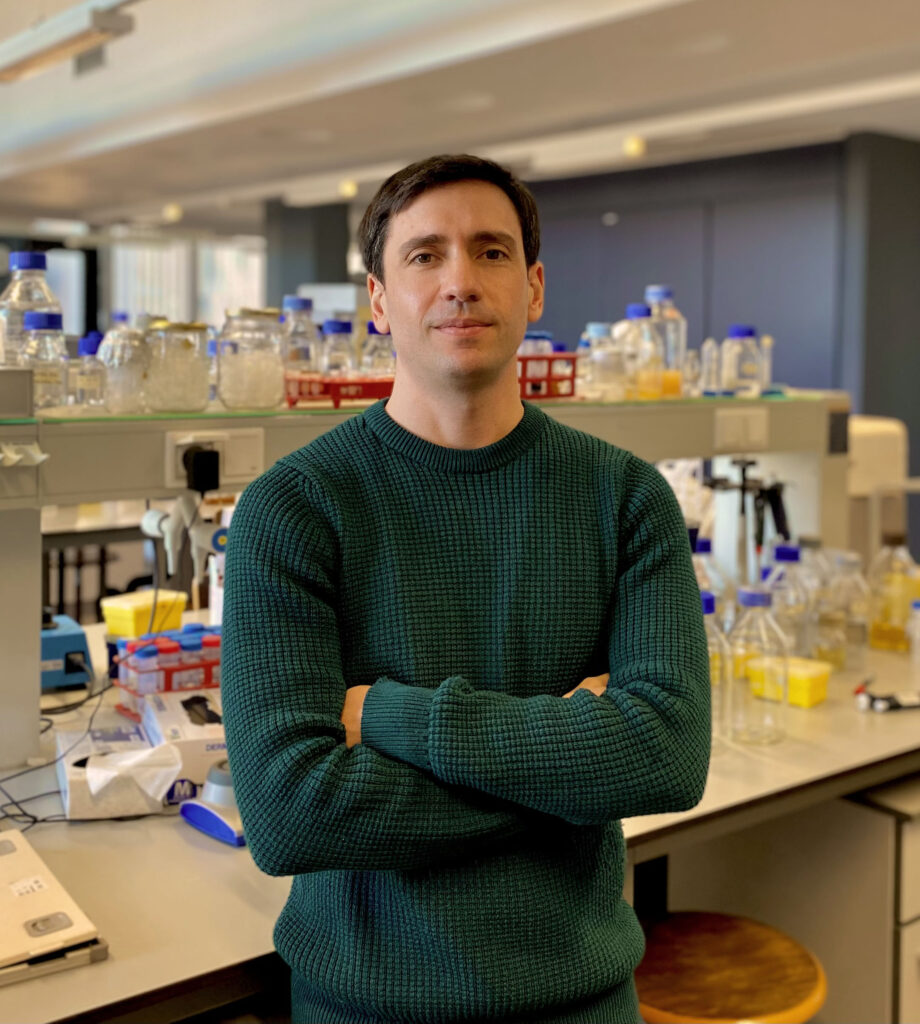
Contact
Croix du sud 4-5/L7.07.06
Carnoy b.222
1348 Louvain-la-Neuve
Emiliano was born and grew up in Argentina. He is a microbiologist and has a PhD in Biological Sciences from the National University of Río Cuarto (UNRC), Argentina. His doctoral thesis focused on the metabolism of choline (a quaternary ammonium compound) and the enzyme Phosphorylcholine phosphatase, and their relationship with the pathogenesis caused by Pseudomonas syringae.
He then spent two years working as a postdoctoral researcher at the INBIAS Institute (CONICET-UNRC) in Argentina, researching the role of bacterial surface molecules in rhizobia-legume symbiosis. He looked into the involvement of exopolysaccharides (EPS) and proteins in plant-microorganism and microorganism-microorganism interactions through microbiological and physiological methods, and he performed in-silico studies to describe the physiological protein-ligands interaction.
He has considerable experience in the areas of molecular biology, microbiology, and computational biology.
Since December 2020, he has been part of Dr. Soumillion’s laboratory as a postdoctoral researcher.
Research
Inteins are well-known protein domains inserted into host proteins. They catalyze their own splicing while ligating the flanking sequences by a new peptide bond. They belong to the HINT superfamily, which also comprises the bacterial-intein-like (BIL) family, whose members have been much less studied. The project carried out by Dr. Emiliano Primo aims to characterize the autocatalytic mechanism of an extracellular bacterial-intein-like (BIL) domain embedded in large extracellular proteins from Pseudomonas syringae pv. tomato DC3000. Previously, Dr. P. Soumillion’s team studied this BIL domain and discovered that although it is not capable of splicing, it undergoes efficient self-excision from its host protein while cleaving two peptide bonds at its N- and C-junctions. Interestingly, instead of being ligated through a peptide bond, the flanking polypeptides end up connected by a disulfide bridge.
The project will study this autocatalytic mechanism by combining biochemical and structural biology approaches, and by taking advantage of specific variants whose cleavage at either junction can be chemically triggered.
This BIL domain acts as a maturation domain and may find useful applications in biotechnology or synthetic biology, for the design of autocleavable linkers or modules for conditional protein inactivation, for example.

 orcid.org/0000-0003-3884-8157
orcid.org/0000-0003-3884-8157